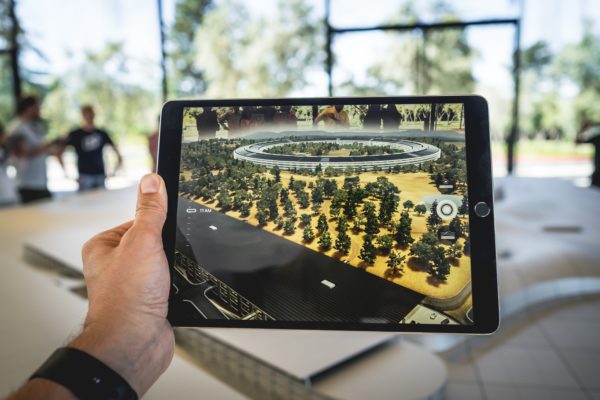With huge potential for improving carbon fibre manufacturing, collaborators have discovered how to achieve ultra-high resolution of carbon fibre precursor.
Innovative thinking and the special properties of germanium crystal have helped achieve a breakthrough for researchers seeking to enhance carbon fibre analysis at the Australian Synchrotron.
Led by Carbon Nexus – Deakin University’s unique carbon fibre research facility – the researchers developed Infrared imaging technology that has improved scientific understanding of the chemical changes that affect the structure of precursor material in the production of high-performance carbon fibres.
The team of nine scientists working on the project were collaborating from Carbon Nexus, the Infrared Microspectroscopy group at the Australian Synchrotron, the Australian Nuclear Science and Technology Organisation (ANSTO), and Swinburne University of Technology.
Recently published in the “Journal of Materials Chemistry A,” their research paper elucidates the exact chemical transformation occurring during the heat treatment of polyacrylonitrile (PAN), which produces structural changes. PAN is the chemical precursor used in the production of all high quality carbon fibre.
Dr Nishar Hameed initiated the concept and led the project when he was a Research Fellow at the Institute for Frontier Materials, and the work forms part of Srinivas Nunna’s PhD research at Carbon Nexus, under the supervision of Dr Claudia Creighton.
Mr Nunna is lead author of the paper and received a postgraduate research award from the Australian Institute of Nuclear Science and Engineering (AINSE) to support the study. Originally from Bapatla in southern India, he has been at Carbon Nexus for the past three years and hopes to continue his research here.
“This improved chemical understanding will allow us to analyse the structural variations of PAN fibres in the cross-sectional level at every stage of the production process,” said Mr Nunna. “We hope to do this over the next six months at the Synchrotron so we can find ways to improve the fibre quality and reduce energy use in production.”
“The majority of commercial carbon fibres are manufactured from PAN, but an imperfection often occurs during production that affects its material properties,” added Dr Hameed.
“Although it has been more than half a century since carbon fibres were first developed, the exact chemical transformations and the actual structure development during heat treatment is still unknown. Because the conversion of PAN to carbon fibre does not occur evenly across the fibre, it results in a skin-core structure that manufacturers are seeking to prevent so they can enhance the fibre strength.
“The most significant scientific outcome of this study is that the critical chemical reactions for structure development were found to be occurring at a faster rate in the core of the fibre during heating, thus disrupting the more than 50-year-old belief that this reaction occurs at the periphery of the fibre due to direct heat,” said Dr Hameed.
Dr Creighton, who is a lead researcher in low-cost carbon fibre at Carbon Nexus, noted that high-end applications, particularly in the automotive and aerospace industries, were most likely to benefit from the research.
Dr Mark Tobin, the Principal Scientist-IR at the Australian Synchrotron, said that the group had sought to overcome existing analysis techniques over the two-year project.
“To acquire detailed images of the fibres, which are only 12 microns across, we modified the beamline for the experiment, using a highly polished germanium crystal to focus the IR beam onto the fibres. Germanium is a chemical element that is similar to silicon. We discovered that if we made a lens pointed on one side, when the pointed side is pressed down onto the surface, we can achieve much better magnification.
“This technique to focus the synchrotron beam is based on the concept of Attenuated Total Reflection (ATR). It allowed us to acquire images across individual fibres, to see where carbon-carbon triple bonds in the PAN were being converted to double bonds.
“We can use this new technique for other purposes, such as analysing paint samples, inspecting the surface of insect wings or many other uses that could lead to improved applications.”
Located in Clayton, Victoria, the highly sophisticated Australian Synchrotron is a giant machine (about the size of a football field) that accelerates electrons to almost the speed of light. As electrons are deflected through magnetic fields, they create extremely bright light, which is channelled down beamlines to experimental workstations for research purposes.
The synchrotron is involved in health research, in areas such as cancer, influenza, diabetes and other diseases, and materials research.
• Read more: “Journal of Materials Chemistry A,”



